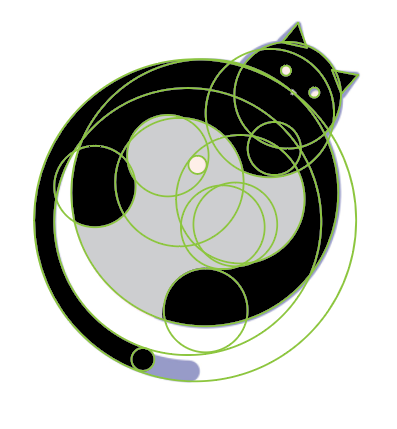Brand Corporate Identity Lectures & Tasks
CONTENT
INSTRUCTION
LECTURES
- Branding gives you credibility
- Branding gives you credibility.
- With a clear brand, you can charge what you're worth.
- Branding leads to customer loyalty.
- Branding leads to returning customers & referrals.
- Branding = Consistency.
- Branding helps to attract your ideal clients.
- Branding your business will save you money and time.
- Branding will give you confidence in your business.
- Established branding makes it easier to introduce new products/services.
- Branding gives you a clear strategy for moving forward
fig 1.2: cycle of branding |
- Logomark: Symbol/image-based logo.
- Misunderstanding: People often think a logo must include both text and image.
- Usage: “Logo” has become a catch-all term for various brand marks (symbols, emblems, monograms, etc.).
- Also known as a combination mark.
- Logotype = Wordmark: A logo made entirely of text (company name or initials).
- These terms are often confused, but each has a specific role in brand identity.
- Commonly used as recognizable logos for individuals or companies.
- Origin: From Greek, meaning “single line”, referring to an outlined or unified form (Mollerup, 2001).
- Monograms serve as stylized, minimal brand marks.
- Coat of Arms: Full heraldic design representing a person, family, or entity.
- Insignia: Symbol or emblem denoting rank or membership.
 |
| fig 1.5: Royal Malaysian Police insignia |
- Positioned above the shield in a coat of arms (originally on a helmet).
- Can also appear separately (e.g., on stationery or official documents).
- Often used within a design programme to maintain visual consistency.
- Part of broader branding efforts:
- Design programme = Organizational-level identity control.
- Branding = Product-level identity control.
- Quoted from Mollerup (2001): Trademarks aid identification through structured visual system.
| fig 1.6: example of trademark |
- Service Mark(SM): A trademark specifically for services (used in the U.S. and other countries).
- Unregistered Marks: TM (Trademark) and SM (Service Mark) indicate pending or informal use.Not legally protected until registered.
- Registered Trademark (®): Typographic symbol indicating official registration with a national trademark office. Provides full legal rights and protection to the owner.
A strong brand needs shared intention from its leadership to effectively engage its audience.
Brand ideals are driven by values, which serve as a "true north" to guide the brand's direction.
Good brand values reflect consumer beliefs while staying true to the brand's passion and purpose.
Vision – Courage to imagine and act on bold ideas.
Meaning – Develops over time and must be communicated clearly.
Authenticity – Knowing and staying true to the brand’s identity builds trust.
Differentiation – Stand out meaningfully, not just for the sake of being different.
Sustainability – Ensure long-term relevance in a changing world.
Coherence – Consistency builds familiarity, trust, and loyalty.
Flexibility – Be ready to adapt and grow with time.
Commitment – Everyone involved should be fully dedicated to the brand’s success.
Value – A brand must deliver results and maintain its worth as an intangible asset.
- Strategy is the long-term plan (the map).
- Positioning is the current location and destination on that map (Willis, 2017).
- A strong brand position is hard to change.Example: Volvo was seen as "safe" but lost appeal to men due to low excitement.
- Many brands today lack distinction and feel similar.
- To stand out, find the gaps in competitors’ positioning (white space in the market).
- Challenge the Leader – Compete head-on with major brands (e.g., Pepsi vs. Coke). Requires time and resources.
- Target a Niche – Focus on an underserved segment within a broader market.
- Reframe the Market – Change how consumers view the category by making existing benefits feel outdated.
- Be a Disruptor – Create a new category (e.g., Uber, Xerox). Be first, but move fast to stay ahead of imitators (e.g., Grab copied Uber).
Start by asking:
Who are you?
What do you do?
Why does it matter?
Steps to clarify positioning:
Assess current brand positioning.
Identify direct competitors.
Analyze competitor positioning.
Find what makes your brand unique.
Create a clear, value-driven idea.
Write a brand positioning statement.
Test its effectiveness.
TASK 1-BREAKING BRAND
TASK 2A-Logo Research & Analysis
TASK 2B-Logo Design
- symbolizing comfort, playfulness, and companionship
- ideal for a toy brand targeting children and parents
 |
| fig 2.1: initial sketches |
Feedback from Ms Vitiyaa on this logo: The design is too detailed—when scaled down to a smaller size, it becomes difficult to see clearly. Try to make it simple.
 |
| fig 2.6: logo with the guideline |
After this, I began my Final Logo Development, which must include all version of logo, logo usage guideline, logo rationale, brand primary & secondary colours, logo/brand typeface(s), patterns derived from the logo and logo gif.
TASK 3-Positioning & Identity
 |
| fig 3.7: letterhead mockup process |
 |
| fig 3.8: envelope mockup process |
 |
| fig 3.9: reception desk mockup process |
 |
| fig 3.10: vanishing point tool in ps |
TASK 4-Brand Guideline Creation
- Core values, mission, vision (from earlier tasks)
- Logo usage (versions, clearspace, sizing)
- Colour palette
- Typography
- Examples of stationery, collateral, digital presence, and environmental graphics
 |
fig 4.1: booklet design in Indesign |
 |
| fig 4.2: with guideline, margins and columns |
My guideline, margins and columns will be stable in all pages.
 |
| fig 4.3: book design elements |
In week 12, I completed my booklet design and printed out for physical submission.















Comments
Post a Comment